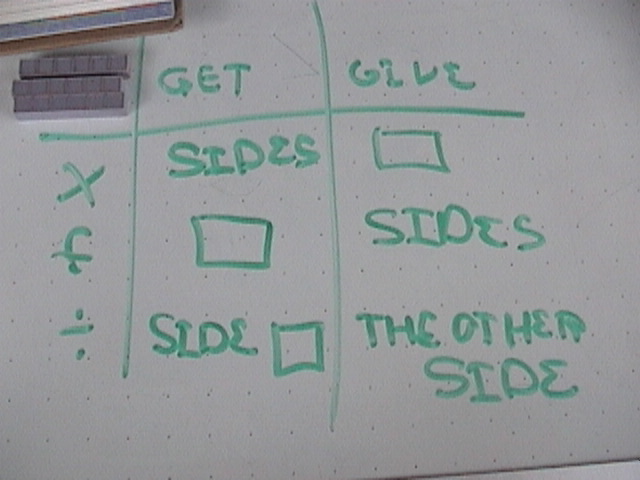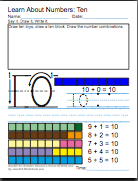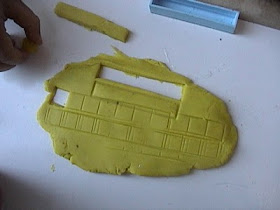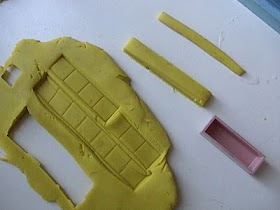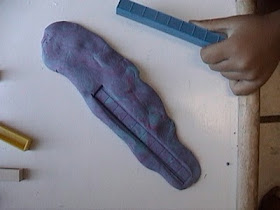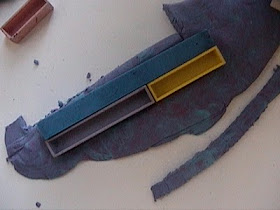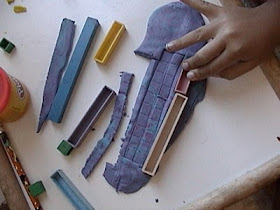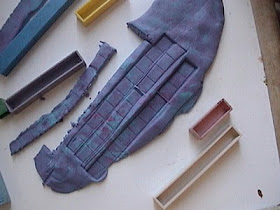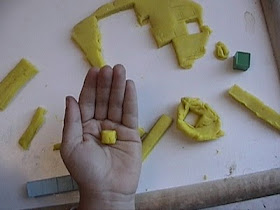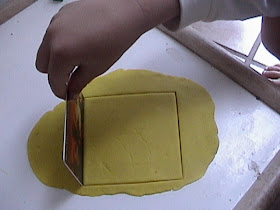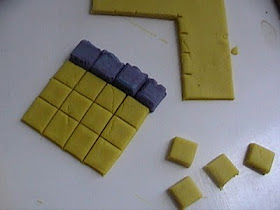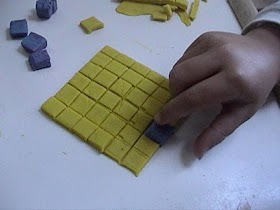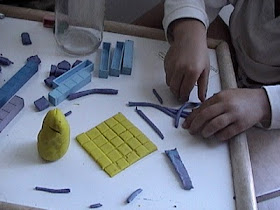Passwords are changing and going up in price on (or about) March 1st.
If you already have a password and want a free update email me...if you have ordered a kit through me you get free passwords all year long...if you made a donation of a buck or more get a free update by just emailing me...
If you have been putting off the major decision on whether or not to sped a buck you have a few days left to get one for $1.
A password gets you into the screencast page the pdfs page and the advanced algebra page as well as the password test page which just has links to the pages where the password works.
More stuff is being added, and more blog posts will be up this week...thanks for all your support.
Sunday, February 27, 2011
Wednesday, February 23, 2011
Base Ten Block Division Worksheets
 |
| Start small and pretty soon this is EASY! |
Here is a short screencast on how to use the division worksheets...
This is just one activity among many. No need to spend day after day on division. That link takes you to the division page at the house of math.
Here is a page with yet more videos and explanation regarding division with base ten blocks. I highly recommend you spend some time there if you are going to teach/play/fool around with division. Manipulatives make division EZ and you will find you get fewer complaints and more understanding if you use them.
This is just more fooling with rectangles and counting the sides, in this case we know the whole rectangle and one side and just have to count the other side. We also have to remember to stop and record when we get to TEN.
Here is the Password Protected PDF's Page. You need a password. They cost a buck till the end of the month.
Update: Passwords at the cheapest cost ten bucks now (2014) and an annual password is 24 bucks which works out to 2 bucks a month. Take your time and digest all the stuff you get for free first, or at leaste a lot of it and then get a password. There's FREE worksheets and more at the house of math. The one in the vid on this page isn't though. Just another reason to get a password...when you're ready. No more excuses about having blocks and not knowing what to do or how to use them.
Play blocks first and very quickly THEY will see (and if you are a clever teacher THEY will discover, YOU WON'T TELL THEM) the algorithm "multiply and subtract" when they see the symbols presented correctly. In kid culture it's very common to hear hear "I hate long division." There's no need for them to hate something so easy and obvious.
Divinely Dandy Non Difficult Division

Get Divinely Dandy Non Difficult Division for just $19.99. This book will show you everything you learned here and MORE laid out step by step with links to videos and pages that give simple concise explanations for how to use the rectangle to organize thought, how to introduce division concepts at a very young age, and how to make fun while you are doing it. I guarantee that video alone will expand your thinking when it comes to division and math.
Watch the video on the Preview and Purchase page that gives you a page by page over view of the PDF so you can "try before you buy", see exactly what you are getting and be confident it will be money well spent.
Find us on FACEBOOK.
And yes I'm on Twitter.
Saturday, February 19, 2011
Simple Systems Of Equations
Start off easy and it will stay easy. What are we doing? Understanding basic concepts and ten seeing how we come up with te rules and process they teach for solving equations. This student is 11. This is his second exposure.
l + d + t = 12
l + t = 8
l + d = 7
Solve for l, d, t...
Now make up some of your own...
Then lets go back to some "regular" problem solving, which seems extra easy now that we only have one variable to figure out...later once the concepts are fully understood we can go back and have multiple lions and tigers and dogs, oh my. (I couldn't resist.) Later we can introduce two lions, then maybe two lions and three tigers...etc...
Right now what to do when a negative number shows up?...understand same, hero zero and no fun get back to one.
Here is a quick screencast on it...for more go to the problem solving page at Crewton Ramone's House of Math.
Face Book Me.
Look they practically give the thing away...get one if you haven't already got one tucked away somewhere. Great for making highskool kids see how easy it can be...
l + d + t = 12
l + t = 8
l + d = 7
Solve for l, d, t...
Now make up some of your own...
Then lets go back to some "regular" problem solving, which seems extra easy now that we only have one variable to figure out...later once the concepts are fully understood we can go back and have multiple lions and tigers and dogs, oh my. (I couldn't resist.) Later we can introduce two lions, then maybe two lions and three tigers...etc...
Right now what to do when a negative number shows up?...understand same, hero zero and no fun get back to one.
Here is a quick screencast on it...for more go to the problem solving page at Crewton Ramone's House of Math.
Face Book Me.
Look they practically give the thing away...get one if you haven't already got one tucked away somewhere. Great for making highskool kids see how easy it can be...
Friday, February 18, 2011
Problem Solving with Sarah
Here is a quick screencast, less than five minutes showing two problems.
6x + 2 = 14
There are 6 Girl scouts with some cookies. I have two cookies. Together we have 14 cookies do we all have the same amount? (...or how many does each girl scout get?)
9x + 3 = 21
Nine kids have 21 apples divided among themselves, they have three left over...how many apples does each kid get...?
There's a lot more I would have said on the first one by way of explanation...but it was on the fly unrehearsed one take...the problem solving page goes into more detail because I'm sure after watching these which are NOT beginner problems you will have questions.
For a more complete explanation on problem solving go to Crewton Ramones House of Math.
6x + 2 = 14
There are 6 Girl scouts with some cookies. I have two cookies. Together we have 14 cookies do we all have the same amount? (...or how many does each girl scout get?)
9x + 3 = 21
Nine kids have 21 apples divided among themselves, they have three left over...how many apples does each kid get...?
There's a lot more I would have said on the first one by way of explanation...but it was on the fly unrehearsed one take...the problem solving page goes into more detail because I'm sure after watching these which are NOT beginner problems you will have questions.
For a more complete explanation on problem solving go to Crewton Ramones House of Math.
Thursday, February 10, 2011
Division: How Not To Do It.
Had to edit this to remove the swearing...for the more delicate viewers...
Our teaching of mathematics has devolved into blindly following those who have gone before us who broke down division into the algorithm of multiply and subtract, without any knowledge of what it MEANS and what we are doing with the symbols.
Basically division is subtracting very quickly, the quotient is how many times we can subtract the divisor from the dividend...we use multiplication to to make this process fast and supposedly easy. Ask any 6th grader how much they like long division...
What you see here is just a smattering of pages on the WWW that claim to teach division, I point out places where zeros don't need to be and where they should be but aren't...the problem with 25 as the divisor is a great example...aren't there four 25's per hundred? This might be useful in solving the problem...
Also beware of using multiplication tables to get students to memorize multiplication facts.
All of this and I still haven't gotten to the Boy Scouts and cinnamon bun stories Jerry Mortensen was famous for telling when introducing division concepts to students of any age, from 4 to 84...
Worksheets coming that show how to do it the right way are coming SOON.
Go to Crewton Ramone's House Of Math for more...like the pages on a much better way to introduce and teach division (and multiplication) found here.
Our teaching of mathematics has devolved into blindly following those who have gone before us who broke down division into the algorithm of multiply and subtract, without any knowledge of what it MEANS and what we are doing with the symbols.
Basically division is subtracting very quickly, the quotient is how many times we can subtract the divisor from the dividend...we use multiplication to to make this process fast and supposedly easy. Ask any 6th grader how much they like long division...
What you see here is just a smattering of pages on the WWW that claim to teach division, I point out places where zeros don't need to be and where they should be but aren't...the problem with 25 as the divisor is a great example...aren't there four 25's per hundred? This might be useful in solving the problem...
Also beware of using multiplication tables to get students to memorize multiplication facts.
All of this and I still haven't gotten to the Boy Scouts and cinnamon bun stories Jerry Mortensen was famous for telling when introducing division concepts to students of any age, from 4 to 84...
Worksheets coming that show how to do it the right way are coming SOON.
Go to Crewton Ramone's House Of Math for more...like the pages on a much better way to introduce and teach division (and multiplication) found here.
More On Division.
How is it possible we can divorce multiplication from division or addition from subtraction...? Or visa-versa?
Here is a little more on division concepts, look forward to more screencasts on this in the future we will just get bigger...and bigger...
Here we start nice and small and add a little twist by talking about parameter and sides. This could be a nice beginner lesson for little kids and also a good lesson for older students.
Here we can see that division and multiplication go together and that they are indeed inverse functions, play with it a little and area parameter (and volume) can be easily understood because they can be easily seen.
Long division is despised among 5th and 6th graders...it should be easy as pie...but not the way we currently teach it. Which by the way is part of a methodology that is an UTTER FAILURE. Yet year after year very little changes. If you start small understanding simple problems like how many times is 2 contained in 8, bigger problems like how many 12's in 132 is also easy and then ones that have remainders like how many 6's in 341 or how many 23's in 687 are no problem. You also realize that you don't want to model every problem with blocks! Once you understand the concepts and have gone from blocks to pictures to symbols ANY problem is easy (or easier) with pencil and paper and "multiply and subtract" makes sense...you might also find students able to do the easy ones that have no remainders in their HEADS.
They are going to have to get very conversant with multiplication though...
In the conceptual method using base ten blocks little kids are exposed to division concepts at the same time they are learning to add and subtract because math is just counting and multiplication and division are just adding and subtracting very quickly...all of it is just counting. 35 divided by 7 is just counting sevens and even easier than that if we use blocks to make a rectangle it's just counting one side when we know the whole rectangle and the other side.
Then there are improper fractions...which is just division, and fractions concepts inherently involve division (and multiplication) concepts. Then of course there are ratios which are also steeped in division concepts...
Go to my division page which is under construction (along with the rest of the site) for more. You'll find this vid as well as a couple of others there.
As you read and watch this know that worksheets are being created for both multiplication and division and they will soon appear on the pass word protected pdfs page...passwords are currently a buck but the password is about to change at the end of the month and the price is going UP.
Currently a password gets you into the pdf's page where you can down load lots of different worksheets, onto a password protected screencast site that has algebra and percentages on it, as well as the advanced algebra page which at the moment isn't that exciting it just links you to the screencast channel and has some vids on factoring all in one place...but I am told it's MORE than worth the dollar, lol. people also tell me that the price is too cheap so people think there's no value there since it's only $1...and a buck doesn't get you anything anymore.
Divinely Dandy Non Difficult Division
Get Divinely Dandy Non Difficult Division for just $19.99. This book will show you everything you learned here and MORE laid out step by step with links to videos and pages that give simple concise explanations for how to use the rectangle to organize thought, how to introduce division concepts at a very young age, and how to make fun while you are doing it. I guarantee that video alone will expand your thinking when it comes to division and math.
Watch the video on the Preview and Purchase page that gives you a page by page over view of the PDF so you can "try before you buy", see exactly what you are getting and be confident it will be money well spent.
Here is a little more on division concepts, look forward to more screencasts on this in the future we will just get bigger...and bigger...
Here we start nice and small and add a little twist by talking about parameter and sides. This could be a nice beginner lesson for little kids and also a good lesson for older students.
Here we can see that division and multiplication go together and that they are indeed inverse functions, play with it a little and area parameter (and volume) can be easily understood because they can be easily seen.
Long division is despised among 5th and 6th graders...it should be easy as pie...but not the way we currently teach it. Which by the way is part of a methodology that is an UTTER FAILURE. Yet year after year very little changes. If you start small understanding simple problems like how many times is 2 contained in 8, bigger problems like how many 12's in 132 is also easy and then ones that have remainders like how many 6's in 341 or how many 23's in 687 are no problem. You also realize that you don't want to model every problem with blocks! Once you understand the concepts and have gone from blocks to pictures to symbols ANY problem is easy (or easier) with pencil and paper and "multiply and subtract" makes sense...you might also find students able to do the easy ones that have no remainders in their HEADS.
They are going to have to get very conversant with multiplication though...
In the conceptual method using base ten blocks little kids are exposed to division concepts at the same time they are learning to add and subtract because math is just counting and multiplication and division are just adding and subtracting very quickly...all of it is just counting. 35 divided by 7 is just counting sevens and even easier than that if we use blocks to make a rectangle it's just counting one side when we know the whole rectangle and the other side.
Then there are improper fractions...which is just division, and fractions concepts inherently involve division (and multiplication) concepts. Then of course there are ratios which are also steeped in division concepts...
Go to my division page which is under construction (along with the rest of the site) for more. You'll find this vid as well as a couple of others there.
As you read and watch this know that worksheets are being created for both multiplication and division and they will soon appear on the pass word protected pdfs page...passwords are currently a buck but the password is about to change at the end of the month and the price is going UP.
Currently a password gets you into the pdf's page where you can down load lots of different worksheets, onto a password protected screencast site that has algebra and percentages on it, as well as the advanced algebra page which at the moment isn't that exciting it just links you to the screencast channel and has some vids on factoring all in one place...but I am told it's MORE than worth the dollar, lol. people also tell me that the price is too cheap so people think there's no value there since it's only $1...and a buck doesn't get you anything anymore.
Get Divinely Dandy Non Difficult Division for just $19.99. This book will show you everything you learned here and MORE laid out step by step with links to videos and pages that give simple concise explanations for how to use the rectangle to organize thought, how to introduce division concepts at a very young age, and how to make fun while you are doing it. I guarantee that video alone will expand your thinking when it comes to division and math.
Watch the video on the Preview and Purchase page that gives you a page by page over view of the PDF so you can "try before you buy", see exactly what you are getting and be confident it will be money well spent.
Wednesday, February 9, 2011
Playing With Rectangles: Learn Math Concepts
Playing with math teaches math...
So much to do so little time it seems. At Crewton Ramone's House of Math there are pages on completing the square, square numbers and of course algebra and problem solving.
Completing the square really is using square numbers, after doing some fairly complex math with ease last week this week we did simple things but still reinforced the concepts of squares and the symbols for square numbers and while we were at it we did the cubes too. So here you see him playing with blocks after completing the square and solving for x for this problem:
x2 +10x + 9 = 0
Getting a feel for the symbols that represent squares and cubes...it's important to give students experience with numbers and concepts in a fun non-threatening way. I am working with a group of teenage girls who have never seen the squares and cubes before being presented with lessons on exponents, much to their detriment. Because of me they will KNOW 1728 is the cube of 12, and when later lessons come up about cubic feet and cubic yards they will have some experience with these numbers. This will not be the last time he writes out squares and cubes. You may also note he is still working on mastering his times tables so this dove tailed perfectly into his work on that.
So much to do so little time it seems. At Crewton Ramone's House of Math there are pages on completing the square, square numbers and of course algebra and problem solving.
Completing the square really is using square numbers, after doing some fairly complex math with ease last week this week we did simple things but still reinforced the concepts of squares and the symbols for square numbers and while we were at it we did the cubes too. So here you see him playing with blocks after completing the square and solving for x for this problem:
x2 +10x + 9 = 0
Getting a feel for the symbols that represent squares and cubes...it's important to give students experience with numbers and concepts in a fun non-threatening way. I am working with a group of teenage girls who have never seen the squares and cubes before being presented with lessons on exponents, much to their detriment. Because of me they will KNOW 1728 is the cube of 12, and when later lessons come up about cubic feet and cubic yards they will have some experience with these numbers. This will not be the last time he writes out squares and cubes. You may also note he is still working on mastering his times tables so this dove tailed perfectly into his work on that.
Friday, February 4, 2011
Colby Completing The Square
This is a two part screencast on completing the square. This is where we are headed:
This is how we get there:
More on completing the square and making it easy by using the simple concept of degree of difficulty. Next after this is mastered we can head on to the quadratic or take a side trip into graphing them and talking about vertex form...and h and k.
But this won't be hard. And neither is this:
As I have said these are uploaded to both screencastomatic and my YouTube channel so if you can't see the screencast here look for it on YouTube.
"Colby Completes The Square Part 1"
"Colby Completes The Square Part 2"
You will find that giving them this formula isn't entirely helpful:
(x + a)2 = x2 + 2ax + a2 nor does it deepen understanding. Further when combined with this:
ax2 + bx + c = 0
with the instruction that completing the square just means replacing c with
(bx/2)2 resulting in
ax2 + bx + (bx/2)2 = -c
might actually cause some confusion as well as fear and trepidation because they don't know what the symbols mean.
Students using base ten blocks and manipulatives know what that means because they can SEE it and rather than giving them rules and process and formula to follow they get an experiential understanding of what the formula means BEFORE they ever see the formula. THEN when they do see the formula it makes sense.
“To state a theorem and then to show examples of it is literally to teach backwards.” ~E. Kim Nebeuts
When I say they don't need the symbols I mean they can hear the problems and do them in their heads...if they have paper and pencil it's even easier.
Go here to see completing the square at Crewton Ramone's House of Math. My students SEE these concepts and more right from the very start. It teaches them how to count, how to multiply and also as a by-product algebra and factoring. Math is a language teach it all at once...
The screencast mentioned in the second vid is not yet up on the password protected channel...it will cover the problems you see in green above in intricate detail...with blocks but mostly with drawing and lastly symbols. You need LOTS of practice before you move on to the quadratic formula.
“The point is to develop the childlike inclination for play and the childlike desire for recognition and to guide the child over to important fields for society. Such a school demands from the teacher that he be a kind of artist in his province.” ~Albert Einstein
“A teacher is one who makes himself progressively unnecessary.” ~Thomas Carruthers
This is how we get there:
More on completing the square and making it easy by using the simple concept of degree of difficulty. Next after this is mastered we can head on to the quadratic or take a side trip into graphing them and talking about vertex form...and h and k.
But this won't be hard. And neither is this:
As I have said these are uploaded to both screencastomatic and my YouTube channel so if you can't see the screencast here look for it on YouTube.
"Colby Completes The Square Part 1"
"Colby Completes The Square Part 2"
You will find that giving them this formula isn't entirely helpful:
(x + a)2 = x2 + 2ax + a2 nor does it deepen understanding. Further when combined with this:
ax2 + bx + c = 0
with the instruction that completing the square just means replacing c with
(bx/2)2 resulting in
ax2 + bx + (bx/2)2 = -c
might actually cause some confusion as well as fear and trepidation because they don't know what the symbols mean.
Students using base ten blocks and manipulatives know what that means because they can SEE it and rather than giving them rules and process and formula to follow they get an experiential understanding of what the formula means BEFORE they ever see the formula. THEN when they do see the formula it makes sense.
“To state a theorem and then to show examples of it is literally to teach backwards.” ~E. Kim Nebeuts
When I say they don't need the symbols I mean they can hear the problems and do them in their heads...if they have paper and pencil it's even easier.
Go here to see completing the square at Crewton Ramone's House of Math. My students SEE these concepts and more right from the very start. It teaches them how to count, how to multiply and also as a by-product algebra and factoring. Math is a language teach it all at once...
The screencast mentioned in the second vid is not yet up on the password protected channel...it will cover the problems you see in green above in intricate detail...with blocks but mostly with drawing and lastly symbols. You need LOTS of practice before you move on to the quadratic formula.
“The point is to develop the childlike inclination for play and the childlike desire for recognition and to guide the child over to important fields for society. Such a school demands from the teacher that he be a kind of artist in his province.” ~Albert Einstein
“A teacher is one who makes himself progressively unnecessary.” ~Thomas Carruthers
Thursday, February 3, 2011
First Grade Math Worksheets.
More free math worksheets are going up everyday. Check out this math worksheet page on my website, it has some good ones for use with base ten blocks. It uses the same color scheme that Mortensen Math uses that was also adopted by Math U See.
People are always looking for free printable math worksheets so I put some on my site you can also find the same ones here in this post. I did a little research and found the greatest demand was for first grade math worksheets and fraction worksheets, so I started there first. Soon there will be all manner of free elementary math worksheets available but the really cool ones and the full length ones are going to be on the Password Protected PDFs Page and a password will cost a dollar. Not one dollar for each math worksheet but a dollar for the whole she-bang. It's already over 100 pages and counting...
As many pdfs as I put there is as many pdfs as you can down load. Like the screencast page you can watch as many times as you want for as long as your password works...which should be for 30 to 60 days, except on the PDFs page you aren't watching you are downloading.
Here is a screencast covering just one of the worksheets you can find on the PDFs page that requires a password. It's two 20 page worksheets covering addends and also gives practice and instruction on how to write the numbers. Here is a FREE sample of it in color for practice with nines and tens. Like the one you see here.
Like always, don't think that it's only going to be for little kids there will be plenty there for older kids too, just with this method the little kids can do what the older kids do...
“Even while they teach, men learn.” ~Lucius Annaeus Seneca
Tweet
People are always looking for free printable math worksheets so I put some on my site you can also find the same ones here in this post. I did a little research and found the greatest demand was for first grade math worksheets and fraction worksheets, so I started there first. Soon there will be all manner of free elementary math worksheets available but the really cool ones and the full length ones are going to be on the Password Protected PDFs Page and a password will cost a dollar. Not one dollar for each math worksheet but a dollar for the whole she-bang. It's already over 100 pages and counting...
As many pdfs as I put there is as many pdfs as you can down load. Like the screencast page you can watch as many times as you want for as long as your password works...which should be for 30 to 60 days, except on the PDFs page you aren't watching you are downloading.
Here is a screencast covering just one of the worksheets you can find on the PDFs page that requires a password. It's two 20 page worksheets covering addends and also gives practice and instruction on how to write the numbers. Here is a FREE sample of it in color for practice with nines and tens. Like the one you see here.
Like always, don't think that it's only going to be for little kids there will be plenty there for older kids too, just with this method the little kids can do what the older kids do...
“Even while they teach, men learn.” ~Lucius Annaeus Seneca
Tweet
Passwords $1
Math Bunny towing the line for Crewton Ramone's House Of Math.
Passwords are available here and here and here.
More links to FREE stuff appear on the FB page.
Passwords are available here and here and here.
More links to FREE stuff appear on the FB page.
Wednesday, February 2, 2011
Typical High School Algebra II
Another session with several high school girls doing typical high school algebra out of a common textbook. These girls are, as it turns out, 14. This one was there just for the fun of it, but it soon became clear she had an aptitude for algebra brought about by her not really having any anxiety over it because she was in a different (and lower) level class.
We played around with algebra concepts and got quite a lot done. Perhaps too much for one session.
Earlier we did do some factoring and completing the square where we see
x2 = 9
and
(x + 1) 2 = 9 are EASY once you understand a little about squares an square roots. We also played with completing the square.
Earlier on we did spend some time solving equations like you see in this video.
Here we see the notation without the symbols, there is an extraneous 15 there which she used to help her figure out the factors we didn't set these equal to anything and solve for X we just factored polynomials.
This girl--well spoken, obviously intelligent--has some issues with math due to a "F" or two on tests. She was able to make easy things hard because of her perception. Fortunately, she had a couple of friends there who were "getting it" which helped her think, "if they "get it" I can "get it" too." This is yet another reason to tutor in small groups.
Here is a the screencast, talking about group learning algebra and more.
The thought you want to instill in the group is: "this is fun and easy."
I have the same videos on screencast0matic and on Youtube as a back up hopefully if one is down the other is working...the name of this video is "Crewtonn Ramone Typical High School Algebra II"
“It is the supreme art of the teacher to awaken joy in creative expression and knowledge.” ~Albert Einstein
We played around with algebra concepts and got quite a lot done. Perhaps too much for one session.
Earlier we did do some factoring and completing the square where we see
x2 = 9
and
(x + 1) 2 = 9 are EASY once you understand a little about squares an square roots. We also played with completing the square.
Earlier on we did spend some time solving equations like you see in this video.
Here we see the notation without the symbols, there is an extraneous 15 there which she used to help her figure out the factors we didn't set these equal to anything and solve for X we just factored polynomials.
This girl--well spoken, obviously intelligent--has some issues with math due to a "F" or two on tests. She was able to make easy things hard because of her perception. Fortunately, she had a couple of friends there who were "getting it" which helped her think, "if they "get it" I can "get it" too." This is yet another reason to tutor in small groups.
"Whether You Think You Can or Can't, You're Right"~Henry Ford
Laughter is the best cure for math anxiety.
Covering negative expressions requires a password, I talk about the concept of opposites and combining however on the screencast, if you want more on how to do "the negative ones" you need to get a password which only costs a buck.Here is a the screencast, talking about group learning algebra and more.
The thought you want to instill in the group is: "this is fun and easy."
I have the same videos on screencast0matic and on Youtube as a back up hopefully if one is down the other is working...the name of this video is "Crewtonn Ramone Typical High School Algebra II"
“It is the supreme art of the teacher to awaken joy in creative expression and knowledge.” ~Albert Einstein
Tuesday, February 1, 2011
7 And 8 Year Old Algebra And Math Facts
Another 90 minute lesson with a 7 and 8 year olds...and as it turns out the last lesson for the little girl as she is moving away to California.
Here we see her working on factoring various problems, basically making rectangles and counting the sides. While she is learning algebra she is also learning lots of other math facts, addends and multiplication too. As an added bonus she is being exposed to algebra.
They worked on square ones and ones that were just plain ol' rectangles.
Here is a shot of the little boys notebook. He was much prouder of the fact that he made his fives correctly than he was of factoring the polynomials... You can also see the transition from drawing to symbols.
Completing this square was a lot of counting because they didn't now what 8x8 was.
They got out the blocks and took a while to figure it out. The boy got to 32 and then doubled it...then we went back and counted by eights, 8 takes the 2 out of the next 8 for 16, 6 takes the 4 out of the next 8 for 24, 4 takes the 6 out of the next 8 for 32, 2 is happy to get an 8 for 40, then it's 48 and the pattern repeats, 8 takes the 2 out of the next 8 for 56, and 6 takes the 4 out of the next 8 for 64. Whew! That's some counting right there kids, I'll tell ya!.
Here is the screencast called "Crewton Ramone 7 & 8 Year Old Algebra And Math Facts." Made screen casts for teachers who have youtube blocked. :
Crewton Ramone's House Of Math.
“The man who can make hard things easy is the educator.” ~Ralph Waldo Emerson
Here we see her working on factoring various problems, basically making rectangles and counting the sides. While she is learning algebra she is also learning lots of other math facts, addends and multiplication too. As an added bonus she is being exposed to algebra.
They worked on square ones and ones that were just plain ol' rectangles.
Here is a shot of the little boys notebook. He was much prouder of the fact that he made his fives correctly than he was of factoring the polynomials... You can also see the transition from drawing to symbols.
Completing this square was a lot of counting because they didn't now what 8x8 was.
They got out the blocks and took a while to figure it out. The boy got to 32 and then doubled it...then we went back and counted by eights, 8 takes the 2 out of the next 8 for 16, 6 takes the 4 out of the next 8 for 24, 4 takes the 6 out of the next 8 for 32, 2 is happy to get an 8 for 40, then it's 48 and the pattern repeats, 8 takes the 2 out of the next 8 for 56, and 6 takes the 4 out of the next 8 for 64. Whew! That's some counting right there kids, I'll tell ya!.
Here is the screencast called "Crewton Ramone 7 & 8 Year Old Algebra And Math Facts." Made screen casts for teachers who have youtube blocked. :
Crewton Ramone's House Of Math.
“The man who can make hard things easy is the educator.” ~Ralph Waldo Emerson
Base Ten Blocks and Playdoh
Math Rich Environment II
Playing IS learning. Play with the stuff they like to play with...in this case playdoh and manipulatives.
This screen cast got over 150 hits in a day, I'm pretty sure people were amazed by their ability to multiply more than the dough...but you never know with the internet.
Share it.
Basically, we played and had fun first and learned math concepts second. This play session lasted around two hours. Note the complete lack of symbols in our play. We just talked about the concepts the symbols will come later.
Here you see us playing with addends and subtraction. A lot is going on here...you see hero zero wearing his five disguise at the top, first it was a ten then we made addends for ten below it then the 4 year old showed me ten take away one in no uncertain terms...
Here we see an addend for seven and a couple of cut outs.
Playing with ten and addends for numbers larger than ten.
Here you can see how the boys lined them up and pressed them in...
Talk about making impressions here we see 6+4 reall is the same as 7+3 and they are the both the same as 10.
So what if they don't line up perfectly they still "get it", at this age the emphasis is on playing and fun. You can't play "wrong."
Cut outs for one I don't talk much about it on the screencast and you don't see it here much either but we did all kinds of math with the cut outs...mostly adding and subtraction and smooshing together...
Then we started playing fractions, under my direction...it's play but it's directed play.
"Why don't we...?" What if we...?" "What would happen if...?" "Can you make a square and cut it up...?"
Looks like an American cheese single...and right there I got about 100 ideas for lessons with a pack of cheese singles...eat your math lessons that will get them subtracting assuming you like eating processed American mucus forming chemically enhanced for optimum flavor cheese. I wonder if I could get Kraft as a sponsor? Anyway, I can see lots of lessons that could be done with cheese singles...
Here we talked about one whole...then because it was yellow we cut it into a 4x4 square using the 4 block as a guide. First we cut it in half, then we cut each half in two to get quarters then we cut the other way and we talked about equivalent fractions...1/4 = 2/8 and they could see it...and then we cut those into halves and you get what you see here.
This gave us a good chance to practice counting by fours and to see 4/16, (also see a relationship of 1 to 3, 1:3, but we did not talk about it at all, I mention it here because it's so blatantly obvious we could show equivalent fractions "the other way." Keep it simple and fun and don't try to stuff too much info in there at a time. Older kids and adults might be ready to make the switches between the two but with the toddlers I made sure it was a coherent lesson with no jumps in perception. It's one square with a strip colored in as opposed to two rectangles, one over the other to show ratio and equivalent fractions of 1/3 that way.) This one square teaches a lot of math as it is.
Bigger is funner. Here we put together a six by six square and talked about fractions as we did it...can you see how fractions and multiplication go hand in hand, and that you can teach multiplication with fractions?
The older boy wants in on the action since he did such a good job of counting by 6s.
However the younger boy would like it known that it was he who did all the work.
Since it was all cut up already I used a six to show one out of six or 1/6th. and that was the same as 6 out of 36. 1/6 = 6/36 again they didn't see any symbols and we didn't do any writing during this session.
Here is 1/36. Just for fun.
Here is 6/36 and again I see a ratio lesson here of 5 to 1, but we didn't do it.
Then we made it smaller and talked about fifths. Each blue block is one of five or 1/5.
Which is the same ans 2/10ths.
It was fun rolling out the skinny lines and making stuff with them. I missed taking pictures of using them on that yellow flat to show other fractions and fractions concepts.
Then after we had played enough with these concepts crunch it all together and start all over again.
"What should we do next? " four year old.
"I dunno," I said. "Let's just PLAY." (And see what happens.)
Here is a screencast where the boys help me tell the story. Caution they may blow your mind with their ability to count.
Outages on Youtube and Screencast0Matic have been common lately. I put screencasts here for all my teacher friends who have YouTube blocked at skool. If you can't watch on one hopefully you can watch the other.
The screencast is titled "Crewton Ramone Play W/Clay Learn Math" on both YouTube and Screencastomatc. Last I checked it had 159 hits on screencastomatic alone and it's only been up since yesterday...please hit the like buttons and rate and share it where ever you watch it. People email and ask if they can use my vids and screencasts for various thing. The answer is YES, BY ALL MEANS GO AHEAD. Just don't try and sell them and try and put a link back to this blog or my website.
Vid won't play? Try this link: https://screencast-o-matic.com/watch/cXVwcalGn
Here are a couple of posts where they play and learn math:
Math Rich Environment
Four year old math enrichment.
And just so you don't forget, you teach toddlers algebra right along with fractions and multiplication.
Find us on FaceBook...
Crewton Ramone's House Of Math.
More fun math activities.
Playing IS learning. Play with the stuff they like to play with...in this case playdoh and manipulatives.
This screen cast got over 150 hits in a day, I'm pretty sure people were amazed by their ability to multiply more than the dough...but you never know with the internet.
Share it.
Basically, we played and had fun first and learned math concepts second. This play session lasted around two hours. Note the complete lack of symbols in our play. We just talked about the concepts the symbols will come later.
Here you see us playing with addends and subtraction. A lot is going on here...you see hero zero wearing his five disguise at the top, first it was a ten then we made addends for ten below it then the 4 year old showed me ten take away one in no uncertain terms...
Here we see an addend for seven and a couple of cut outs.
Playing with ten and addends for numbers larger than ten.
Here you can see how the boys lined them up and pressed them in...
Talk about making impressions here we see 6+4 reall is the same as 7+3 and they are the both the same as 10.
So what if they don't line up perfectly they still "get it", at this age the emphasis is on playing and fun. You can't play "wrong."
Cut outs for one I don't talk much about it on the screencast and you don't see it here much either but we did all kinds of math with the cut outs...mostly adding and subtraction and smooshing together...
Then we started playing fractions, under my direction...it's play but it's directed play.
"Why don't we...?" What if we...?" "What would happen if...?" "Can you make a square and cut it up...?"
Looks like an American cheese single...and right there I got about 100 ideas for lessons with a pack of cheese singles...eat your math lessons that will get them subtracting assuming you like eating processed American mucus forming chemically enhanced for optimum flavor cheese. I wonder if I could get Kraft as a sponsor? Anyway, I can see lots of lessons that could be done with cheese singles...
Here we talked about one whole...then because it was yellow we cut it into a 4x4 square using the 4 block as a guide. First we cut it in half, then we cut each half in two to get quarters then we cut the other way and we talked about equivalent fractions...1/4 = 2/8 and they could see it...and then we cut those into halves and you get what you see here.
This gave us a good chance to practice counting by fours and to see 4/16, (also see a relationship of 1 to 3, 1:3, but we did not talk about it at all, I mention it here because it's so blatantly obvious we could show equivalent fractions "the other way." Keep it simple and fun and don't try to stuff too much info in there at a time. Older kids and adults might be ready to make the switches between the two but with the toddlers I made sure it was a coherent lesson with no jumps in perception. It's one square with a strip colored in as opposed to two rectangles, one over the other to show ratio and equivalent fractions of 1/3 that way.) This one square teaches a lot of math as it is.
Bigger is funner. Here we put together a six by six square and talked about fractions as we did it...can you see how fractions and multiplication go hand in hand, and that you can teach multiplication with fractions?
The older boy wants in on the action since he did such a good job of counting by 6s.
However the younger boy would like it known that it was he who did all the work.
Since it was all cut up already I used a six to show one out of six or 1/6th. and that was the same as 6 out of 36. 1/6 = 6/36 again they didn't see any symbols and we didn't do any writing during this session.
Here is 1/36. Just for fun.
Here is 6/36 and again I see a ratio lesson here of 5 to 1, but we didn't do it.
Then we made it smaller and talked about fifths. Each blue block is one of five or 1/5.
Which is the same ans 2/10ths.
It was fun rolling out the skinny lines and making stuff with them. I missed taking pictures of using them on that yellow flat to show other fractions and fractions concepts.
Then after we had played enough with these concepts crunch it all together and start all over again.
"I dunno," I said. "Let's just PLAY." (And see what happens.)
Here is a screencast where the boys help me tell the story. Caution they may blow your mind with their ability to count.
Outages on Youtube and Screencast0Matic have been common lately. I put screencasts here for all my teacher friends who have YouTube blocked at skool. If you can't watch on one hopefully you can watch the other.
The screencast is titled "Crewton Ramone Play W/Clay Learn Math" on both YouTube and Screencastomatc. Last I checked it had 159 hits on screencastomatic alone and it's only been up since yesterday...please hit the like buttons and rate and share it where ever you watch it. People email and ask if they can use my vids and screencasts for various thing. The answer is YES, BY ALL MEANS GO AHEAD. Just don't try and sell them and try and put a link back to this blog or my website.
Vid won't play? Try this link: https://screencast-o-matic.com/watch/cXVwcalGn
Here are a couple of posts where they play and learn math:
Math Rich Environment
Four year old math enrichment.
And just so you don't forget, you teach toddlers algebra right along with fractions and multiplication.
Find us on FaceBook...
Crewton Ramone's House Of Math.
More fun math activities.
